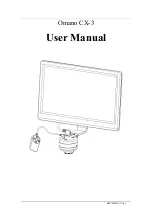
24
24
Procedures for Using Dual Element Transducers with Delay Lines
.
Dual element transducers combine the advantages of single element
delay line transducers with the addition of a few more. The sound beam of
a dual element transducer is generally directed into the test object at a
small angle. The dual element transducer has two active elements
mounted side-by-side with a barrier strip of sound-absorbing material
between them. One element is connected to the instrument pulser and the
other to the receiver. Otherwise, they are electrically isolated from one
another. The elements are mounted at slight angles with respect to the
barrier strip, thus forming the shape of a shallow angle roof. The
transmitted longitudinal beam centerline enters the test object at the "roof angle". The beam continues
into and through the test object, reflects from the back wall and returns at the same angle toward the
receiving transducer.
A dual element transducer is always in a “listening” mode as one half is transmitting. The real benefit
with a dual can be found when inspecting corroded, pitted or eroded materials. Dual element
transducer have the ability to discriminate the peaks and valleys of corrosion and or pitting.
Key Concept
The time it takes to traverse this path includes the sum of times through the transmission delay line,
through the test object thickness to the back wall, from the back wall through the test object again, and
through the receiving element delay line. Therefore a process called Probe Zeroing needs to be done
which eliminates the added material in the sound path, such as the internal delay lines. Also, if a
probe designed for the gage is used the instrument compensates for the non-linearaity due to the V-
Path.
By "ZEROing" out the constant distance paths taken by the sound beam in traversing the dual delay
lines, a measurement can be made of the travel distance in the test object only.
Since the sound beam travels at a slight angle into and out of the test object, the path taken is slightly
longer than in the case where the sound beam enters and exits perpendicular to the test object
surface. Calibration at a specific thickness applies only for that thickness, plus or minus. While the
error at other thicknesses is small, for high precision measurements, it should be taken into account.
While the error can be calculated, it is usually more convenient to determine it experimentally, or to
recalibrate for different ranges of expected test object thickness. This point will be illustrated in the
following setups. The error is referred to as "V-Path Error", so-called because of the V-shaped path
the soundbeam takes in traveling from the transmitting element to the receiving element of the
transducer.
There are several considerations to dual element transducer setups:
1. If the temperatures of the test object and transducer are essentially the same and the setup
is made at basically ambient conditions, the delay line ZERO procedure is relatively easy.
2. If the test object is at a substantially different temperature than the transducer, setting up for
multiple echo interval measurement will be more precise. This technique is also applicable if
the test object is coated or painted.
Dual Element Delay Line ZEROing Procedure
.
Most dual element transducers are either undamped or lightly damped. As a consequence, the setup
must be carefully optimized. The first step is to decide upon which form of display rectification will best
serve. In the following procedure, a 5 MHZ, 3/8 inch (9.5mm) diameter transducer (NOVA Model
TG506) was used to produce measurements in the range from 0.200 to 0.500 inch.
1.
In the PROBE Menu, select DUAL. Then, in the MAIN Menu, change RANGE to 2.00 inch.











































